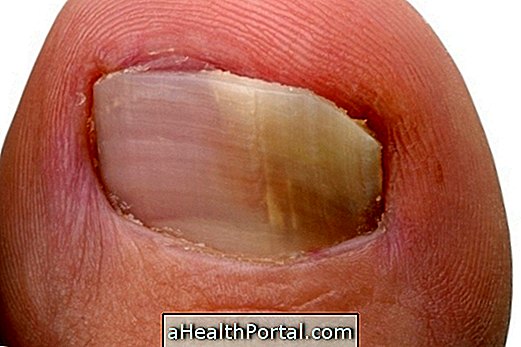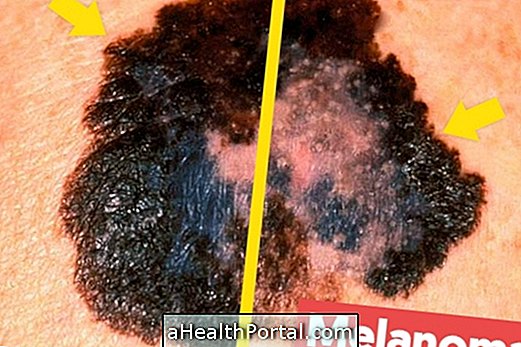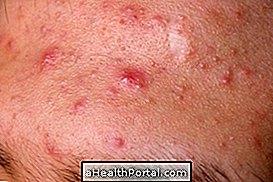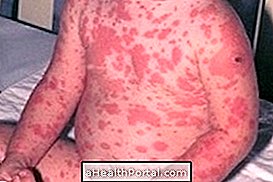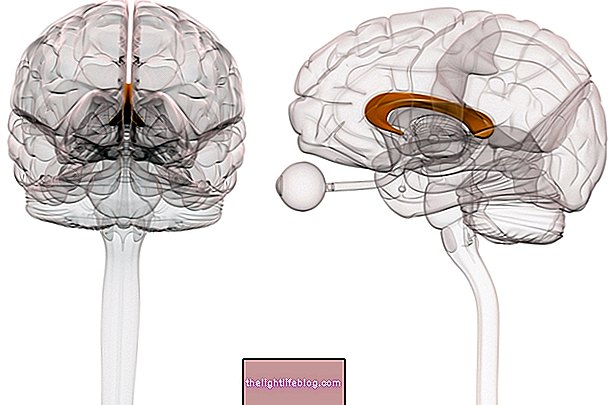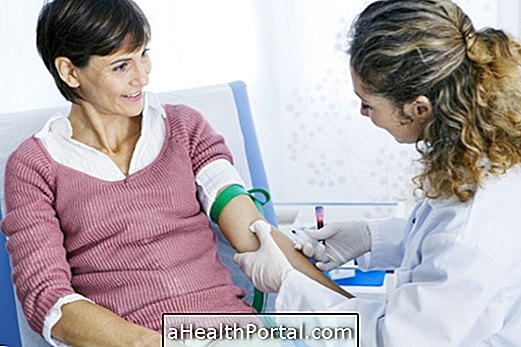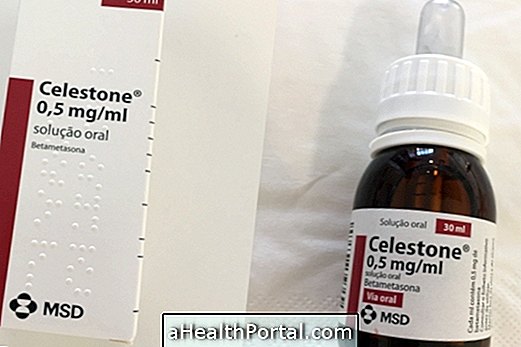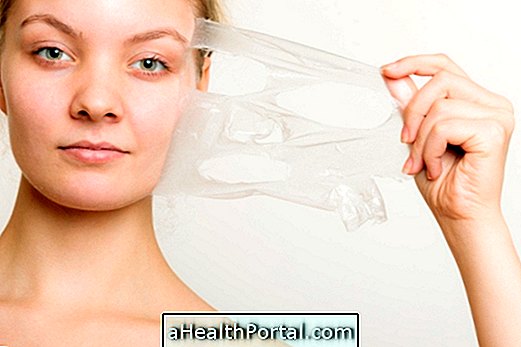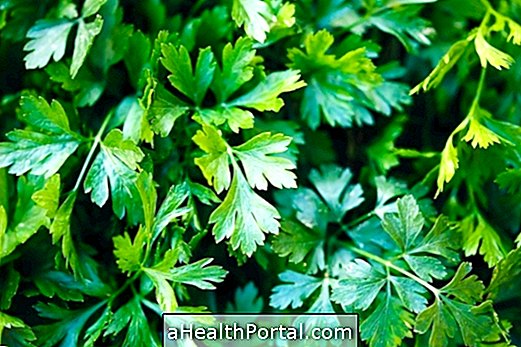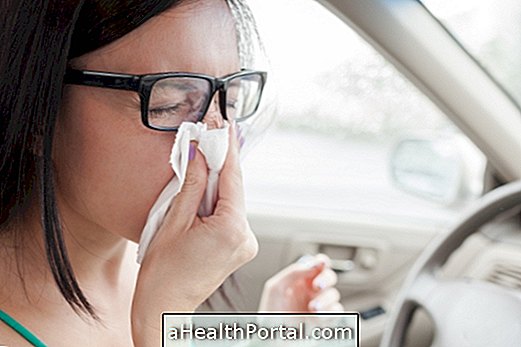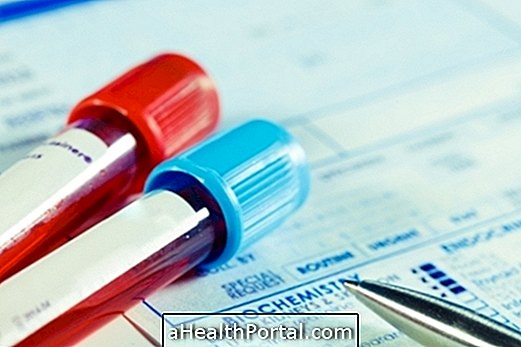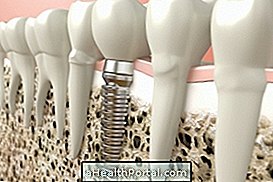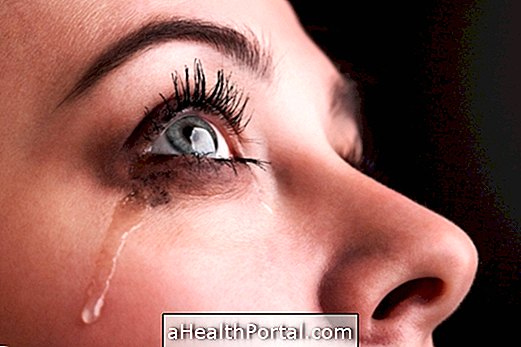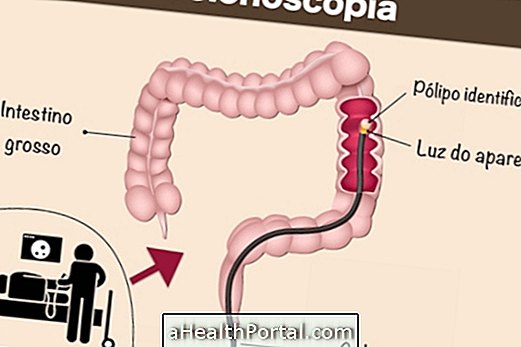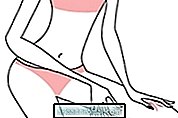Dermatosis is a set of skin diseases characterized by persistent allergic manifestations, whose symptoms are generally blistering, itching, inflammation and scaling of the skin.
The best doctor to diagnose and treat dermatoses is the dermatologist who can identify the cause of the skin change by observing the individual and hearing his or her history. It is not usually necessary to perform specific tests and treatment usually includes the use of oral or ointment medicines.
To minimize the occurrence of seizures, irritating agents should be identified and avoided, skin moisturized frequently, excessive perspiration avoided, bathing with warm water, reduced stress, wearing cotton gloves for housework, and avoiding wearing clothing of synthetic fabrics.
Major types of acne
The most common types of acne are:
Dermatosis papulosa nigra

The papular nigra dermatitis is characterized by the appearance of small dark brown or black patches, mainly on the face and neck without causing pain or other symptom. The appearance of these spots can occur in anyone but is more frequent in black people.
Treatment: Aesthetic treatments such as chemical cauterization, cryosurgery with liquid nitrogen or electrocoagulation may be used.
Occupational dermatosis

Occupational dermatosis is one that is caused directly or indirectly by everything that is used in the professional activity or exists in the work environment, which can be caused by heat, cold, radiation, vibration, laser, microwave or electricity, for example . Some examples of occupational dermatoses are skin burns, allergies, wounds, ulcers, Raynaud's phenomenon and dermatitis caused by contact with the cement, for example.
Treatment: Varies depending on the type of lesions that arise but must be indicated by the dermatologist and may include suitability of the material needed to protect the worker or move away from the job.
Gray dermatosis
Gray dermatosis is a skin disease of unknown cause that is not influenced by climatic, racial, food or work-related factors. It is characterized by the appearance of lesions that appear on the skin, a greyish color with a reddish and thin rim, sometimes discreetly raised.
The lesions appear suddenly, by outbreaks, without previous symptoms and sometimes accompanied by itching. Usually, this type of acne leaves permanent spots on the skin and there is still no effective cure.
Bullous dermatosis
In bullous dermatoses superficial blisters appear on the skin that break easily, leaving the region as a fine scale and forming a crust.
Treatment: It is done by taking medicines like prednisone, but it may also be necessary to take immunosuppressants, such as azathioprine and cyclophosphamide.
Juvenile palmoplantar dermatosis

Juvenile palmoplantar dermatosis is a type of allergy that usually appears on the soles of the feet, especially on the heels and toes, and is characterized by redness, excess production of keratin, and cracked skin with a shiny appearance.
The symptoms of juvenile palmoplantar dermatosis worsen in the winter, and deep cracks can cause pain and bleeding from time to time. The main cause is the use of shoes and socks wet or over contact with water.
Treatment: Your doctor may prescribe a corticoid ointment such as Cetocord and Betnovate, as well as a moisturizing lotion to keep the skin properly moisturized.
Are Dermatitis and Dermatitis the Same Thing?
Both dermatitis and acne are changes in the skin that should be evaluated by the doctor and the main difference between them is that dermatitis occurs when there are signs of inflammation in the skin, whereas in the dermatosis are not present inflammatory signs.
Some examples of dermatitis are psoriasis, eczema, acne and urticaria, and dermatitis are the contact dermatitis that changes that arise from the skin due to contact with substances that can cause allergy like nickel, plastic and chemicals present in some cleaning products.
